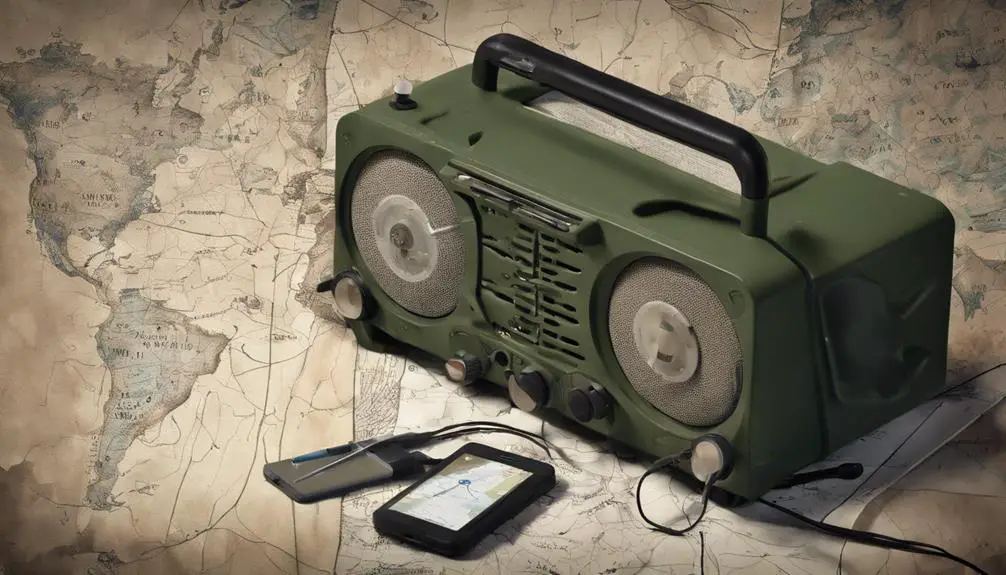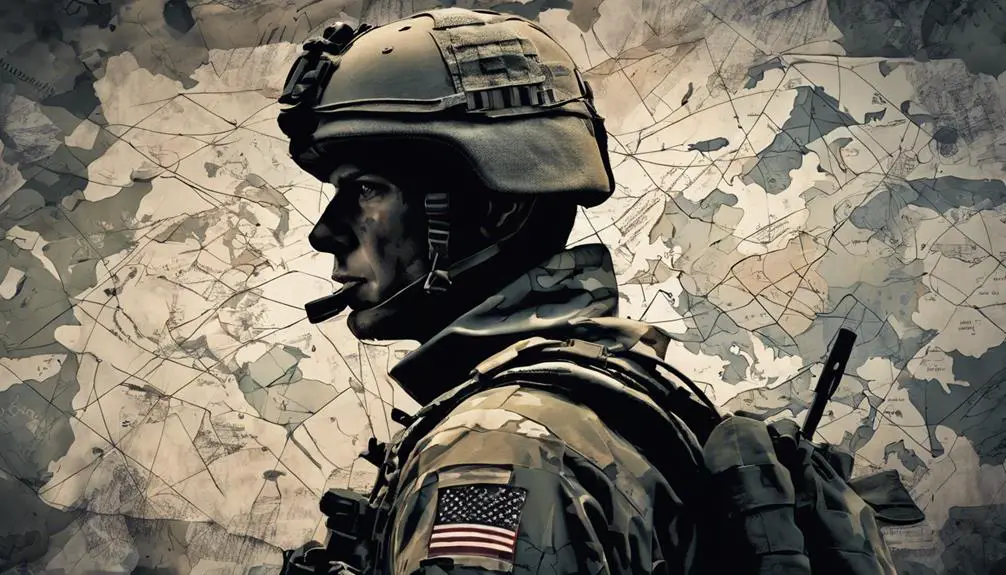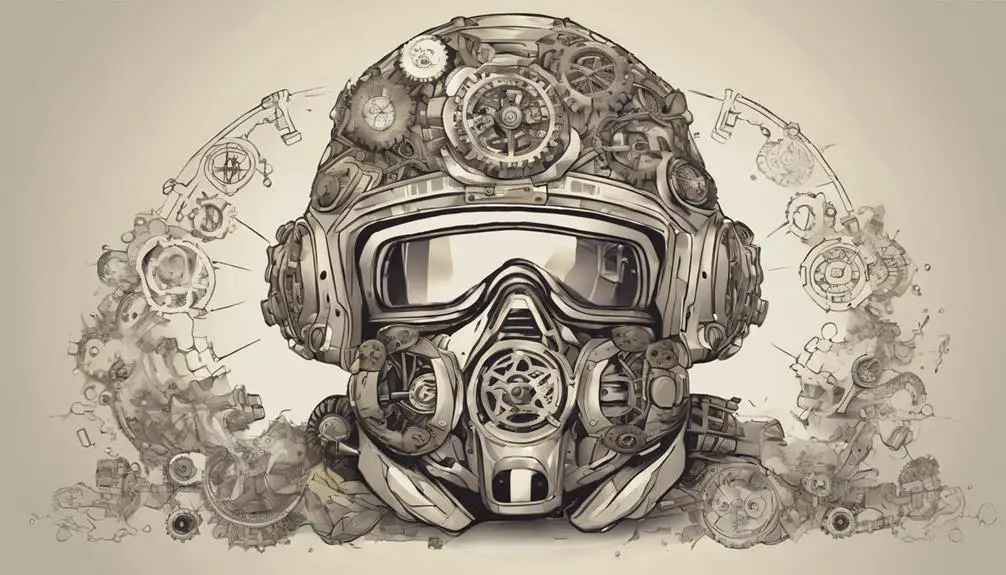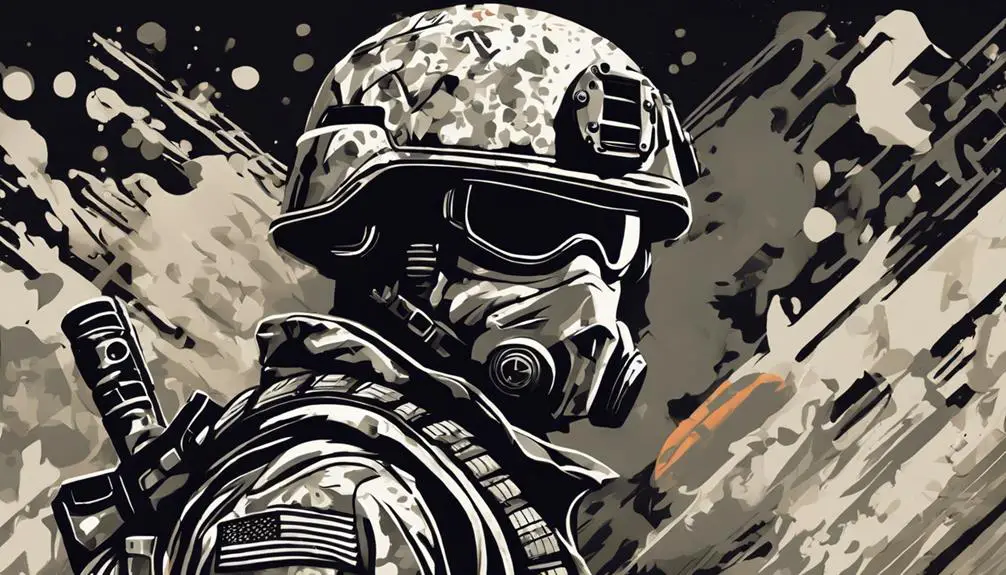When you hear 'Alpha' in a military context, you're likely familiar with the phonetic alphabet used to clarify communication, where 'Alpha' represents the letter 'A' in a standardized code that's essential for accurate and efficient communication in high-pressure situations. This code originated in the early 20th century and was standardized by NATO in the 1950s. Familiarity with specific alpha codes is pivotal for seamless communication. You're just scratching the surface of military slang, and there's more to uncover about the language and culture of the armed forces.
Origins of Military Slang

You've likely wondered where military slang originated from, and the answer lies in the unique cultural, historical, and linguistic context of the military community. The Warrior Etymology, a study of the origin and history of words, reveals that military slang emerged as a response to the need for a distinct language that could facilitate communication among soldiers in the heat of battle. This Battlefield Vernacular, born on the front lines, was shaped by the shared experiences, camaraderie, and cultural nuances of the military community.
Military slang is a byproduct of the military's cultural melting pot, where individuals from diverse backgrounds come together to form a cohesive unit. The language that emerged was a blend of colloquialisms, acronyms, and abbreviations that served as a common tongue for soldiers. This unique language allowed soldiers to quickly convey complex information, often in high-stress situations, and helped to foster a sense of belonging and identity within the military community.
As you explore the world of military slang, you'll discover a rich tapestry of words and phrases that reflect the history, culture, and values of the military.
Phonetic Alphabet Basics
Mastering the phonetic alphabet is essential in military communication, as it allows you to clearly convey critical information over radio and phone networks, especially in environments with poor reception or high levels of background noise. You'll often hear radio operators using this specialized alphabet to guarantee accurate transmission of important information, such as coordinates or call signs.
But where did this system originate?
The phonetic alphabet, also known as the NATO phonetic alphabet, has its roots in the early 20th century. The International Telecommunication Union (ITU) developed the first phonetic alphabet in the 1920s to improve radio communication at sea. Over time, the alphabet evolved, and in the 1950s, NATO adopted a standardized version, which has since become the global standard.
You might be curious about the acronym origins – it's simply the first letter of each code word, like 'Alpha' for 'A' and 'Bravo' for 'B'. Understanding the alphabet history will help you appreciate the significance of this crucial communication tool.
Common Alpha Codes

In military communication, you'll frequently encounter a set of common alpha codes that are used to clearly convey essential information over radio and phone networks. These codes are designed to minimize misunderstandings and guarantee accurate transmission of critical data.
One of the most well-known alpha codes is the NATO phonetic alphabet, which replaces letters with words to avoid confusion between similar-sounding letters. For instance, 'A' becomes 'Alpha,' 'B' becomes 'Bravo,' and so on.
However, it's vital to be aware of Alpha Variations, which can lead to Code Confusion if not understood correctly. These variations might include using different words or abbreviations for the same letter, depending on the region or unit.
To prevent confusion, it's important to familiarize yourself with the specific alpha codes used in your communication network. By doing so, you'll be able to accurately decode and encode messages, ensuring seamless communication in high-pressure situations.
Military Time and Dates
When communicating over radio or phone networks, you'll also need to accurately convey time and dates to guarantee seamless coordination and execution of operations. In the military, time is expressed in a 24-hour format, with hours ranging from 0000 to 2359. This eliminates any confusion between AM and PM.
To avoid miscommunication, dates are also expressed in a specific format. The international standard for expressing dates is DD MMM YYYY, where DD represents the day, MMM represents the month (in abbreviated format), and YYYY represents the year.
Here's a breakdown of military time and date formats:
| Format | Example |
|---|---|
| Time | 1430 (2:30 PM) |
| Date | 25 FEB 2023 |
| Time Zone | UTC+5 (Coordinated Universal Time plus 5 hours) |
| Date and Time | 25 FEB 2023 1430Z (UTC+0) |
| Time Zone Offset | UTC-5 (Coordinated Universal Time minus 5 hours) |
Operational Phrases Decoded

You'll frequently encounter operational phrases during military communications, such as 'SITREP' or 'ROE,' which are essential to understand for effective coordination and execution of operations. These phrases are used to convey critical information quickly and efficiently, often over radio chatter, where clarity is paramount.
To decipher these phrases, you'll need to familiarize yourself with codebreaking techniques, such as recognizing abbreviations and acronyms. For instance, 'SITREP' stands for Situation Report, while 'ROE' refers to Rules of Engagement. Understanding these phrases is vital for seamless communication among team members, ensuring successful mission execution.
Slang in Different Branches
Explore the diverse slang used across different military branches, where each service has its unique flavor of colloquialisms, jargon, and lingo.
You'll find that each branch has its own distinct voice, shaped by its history, culture, and mission.
In the Navy, for instance, you'll encounter Navy Lingo like 'deck ape' for a sailor who works on the ship's deck, or 'scuttlebutt' for a rumor or gossip.
The Marines, on the other hand, have their own Marine Jargon, such as 'oorah' to express enthusiasm or 'high-and-tight' to describe a Marine's haircut.
The Army has its own set of slang, with terms like 'hooah' to express excitement or 'FOB' for a forward operating base.
The Air Force and Coast Guard also have their own unique slang, reflecting their distinct roles and environments.
As you immerse yourself in the world of military slang, you'll uncover a rich tapestry of language that reflects the diversity and complexity of the armed forces.
Evolution of Military Jargon

As military operations adapt to new technologies, strategies, and global events, the language of the armed forces evolves, incorporating fresh terminology, abbreviations, and colloquialisms that reflect the changing nature of modern warfare.
You may notice that military jargon is no longer limited to just a few core phrases, but has branched out to encompass a wide range of cultural references and historical allusions. This evolution is a proof to the cultural integration of the military, which has become a melting pot of diverse backgrounds and experiences.
The language of the military has also taken on a new level of historical significance, as it reflects the changing nature of warfare and the role of the military in global affairs. You can see this evolution in the way that military slang has been adopted by popular culture, with phrases like 'boot camp' and 'semper fi' becoming part of the mainstream lexicon.
As you explore further into the world of military slang, you'll discover a rich tapestry of language that reflects the complex and dynamic nature of modern warfare.
Lost in Translation Moments
When military personnel from different countries and cultures collaborate, misunderstandings can arise from the nuances of military slang, leading to lost in translation moments that can be both humorous and hazardous.
You've likely experienced a situation where a phrase or word was misinterpreted, leading to confusion or even chaos. This can happen when military personnel from different cultural backgrounds work together, as they may not be familiar with each other's slang or idioms.
Here are a few examples of lost in translation moments:
- Cultural Faux: During a joint exercise, a US soldier told a British counterpart to 'break a leg' before a difficult mission, unaware that the phrase has a different connotation in the UK.
- Misheard Orders: A US officer gave an order to 'fall back' to a group of international troops, but a non-native English speaker misheard it as 'fall back' and started retreating, causing confusion among the team.
- Linguistic Mix-ups: A Canadian soldier used the term 'two-four' to ask a US counterpart for 24 beers, but the American thought he was asking for a case of 24 beers, leading to a humorous misunderstanding.
These lost in translation moments can have serious consequences, highlighting the importance of clear communication and cultural awareness in military operations.
Frequently Asked Questions
Are Military Slang Terms Used Universally Across All Branches?
You might assume that military slang terms are used universally across all branches, but that's not entirely true.
While some terms are widely adopted, others vary greatly between branches, leading to Branch Variations.
You'll find that each service has its own Service Exceptions, shaped by their unique culture and history.
Can Civilians Use Military Slang in Everyday Conversation?
As you venture into uncharted territories, you may wonder: can you borrow military slang for everyday conversation?
Think of language as a river, constantly flowing and evolving. Using military slang as a civilian can be a form of cultural appropriation, but it can also be a natural part of language evolution.
If you're mindful of its origins and respectful of its context, go ahead and borrow – but don't appropriate.
Are There Any Formal Rules for Creating New Military Slang Terms?
You might wonder if there are formal rules for creating new military slang terms. The answer is no, there aren't any strict guidelines.
Military slang often emerges through linguistic evolution, driven by the need for concise communication in high-stress environments. Lexical innovation occurs organically, as service members adapt and modify language to fit their unique cultural context.
This organic process allows military slang to evolve naturally, without formal regulations or oversight.
Is Military Slang Used More in Combat Zones or in Garrison?
You're dropped into the heart of a combat zone, surrounded by the sounds of gunfire and explosions. Here, deployment dialectics reign supreme, and military slang is the lingua franca.
But, you wonder, is it used more in these intense environments or back in the relative calm of garrison? The answer lies in the trenches, where slang helps create a sense of camaraderie and shared experience.
In garrison, the jargon is more relaxed, used to poke fun at bureaucracy.
Can Military Slang Be Used to Insult or Mock Others?
You might think that military slang is all about camaraderie, but it can also be used to insult or mock others. Unfortunately, derogatory language is often used to belittle or ostracize individuals, perpetuating social exclusion.
In military settings, this can be particularly damaging, as it can erode trust and cohesion within units.
You should be aware that using slang to demean others can have serious consequences, undermining morale and teamwork.
Conclusion
You've grasped the basics of alpha military slang, and now you're ready to decode like a pro.
Remember, military jargon is like a puzzle – once you have the right pieces, the message becomes clear.
As you navigate the world of alpha codes, phonetic alphabets, and operational phrases, keep in mind that language is constantly evolving, and military slang is no exception.
Stay vigilant, and you'll be speaking like a seasoned veteran in no time.







